TetraVis
a simple turnkey digital twin
of an industrial object
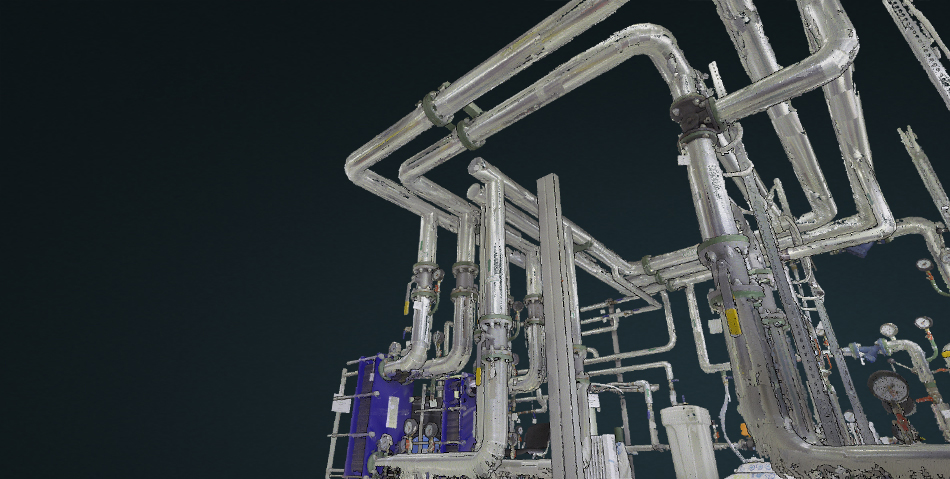
A digital twin (DT) in the broad sense is a virtual copy of a physical object, process, or even a person. DTs of parts and mechanisms, for example, in mechanical engineering, are gradually becoming a standard. But what happens if we consider an industrial enterprise as a “physical object”? This opens up a wide range of possibilities in production management. However, only entities like NASA or large oil and gas companies can afford such a thing. So, what about enterprises that objectively need a DT but lack the resources like NASA?! Let’s explore some solutions.
In production, a DT allows for increased operational efficiency and significant cost savings. With the help of a DT, you can virtually manage the object, model processes, conduct predictive analytics, and perform many other operations. Currently, DTs are conventionally classified into five categories of complexity, ranging from a visual replica of an object to an autonomous enterprise management system.
We have participated in the implementation of different DT solutions, including the Engineering Data Management System (EDMS) for Gazprom Neft, Bimeister, and Building X Lifecycle Twin from Siemens. Currently, all of these solutions correspond to some extent to the second/third/forth category of the above classification. The fifth category is still a dream, but DT managing production themselves will become a reality sooner or later.
One of the most significant projects we have been involved in is the implementation of the EDMS for Gazprom Neft’s oil refineries. This project encompasses a wide range of work that smaller companies may hesitate to undertake due to:
- High implementation and support costs.
- Lengthy integration and complexity of use: the solution requires continuous employee training to master.
While the use of EDMS already provides a significant economic benefit, not every company is currently willing to invest such resources for future gains. Is there an alternative?
Minimalistic turnkey digital twin
Is it possible to create a digital twin in a simpler way: cheaply and quickly, yet with maximum benefit? A case from one of our clients provided us with a hint.
The client is a large design organization that extensively utilizes laser scanning for reconstructing chemical industry enterprises. They shared the point clouds (the “raw” results of 3D laser scanning) with the operational specialists who did not consider implementing a “serious” DT but recognized the value of having an accurate geometric model.
While the benefits were evident, effective utilization posed challenges. The new solution needed to be mastered, and concerns arose regarding support, data relevance, and more.
Thus, we conceived the idea of creating a product based on point clouds: fast to create and implement, easy to learn, and with us taking responsibility for information filling, maintenance, and updates.
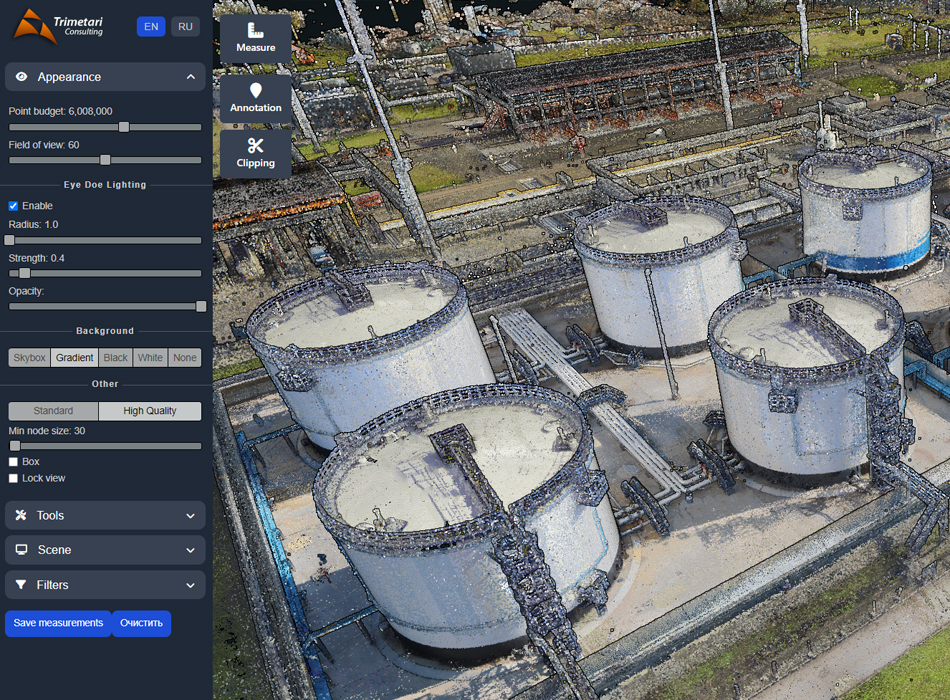
This led to the birth of TetraVis – a three-dimensional visualizer. Through a regular web browser, users gain access to a three-dimensional model of an enterprise. They can perform geometric measurements, assign tasks, exchange data with other users, and independently enrich the model with information.
Who does TetraVis help?
- Surveying department: engineers can use TetraVis to measure objects for repair/reconstruction, look up equipment serial numbers, and more. This eliminates the need to physically visit the site with cameras, notepads, tape measures, or surveying equipment, saving time and effort.
- GIS department: specialists sometimes require more detailed information about objects that are conventionally marked in standard GIS. An accurate 3D model provided by TetraVis fulfills this need.
- HR department: Virtual training of new employees can be conducted using TetraVis, eliminating the need to visit the actual site. This reduces training time, simplifies the process of pass and permit registration, and ensures a safer training environment.
- Management: TetraVis helps realize the dream of a comprehensive digital twin. It provides a cost-effective solution that can be developed specifically for necessary tasks, making it accessible to a wider range of organizations.
The creation and implementation of TetraVis takes weeks, not years, and costs significantly less than a space station. It opens up development possibilities for the most affordable category today.
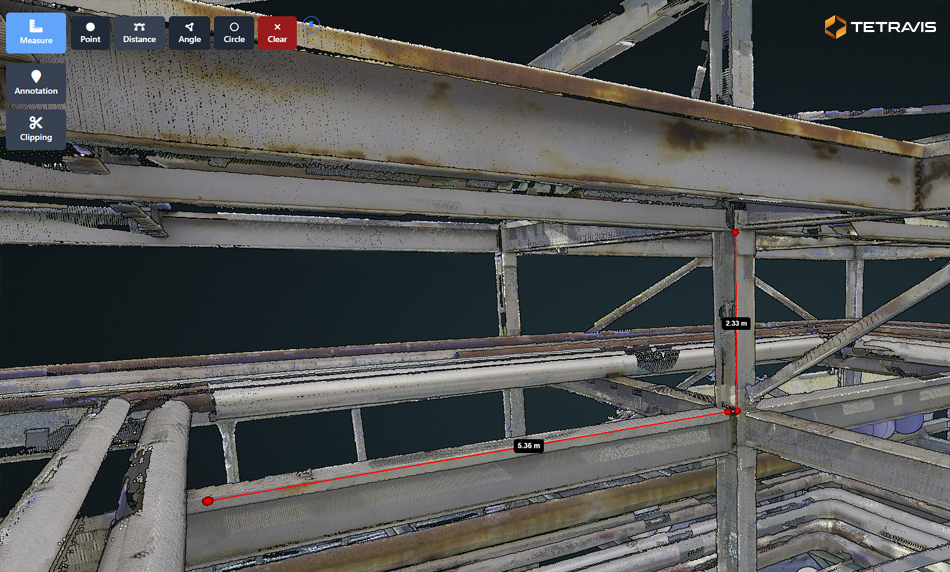
What’s next?
Once TetraVis is implemented in your enterprise, you have two equally important development paths:
- Progress towards implementing a more comprehensive solution on the scale of Siemens Building X Lifecycle Twin. In this case, we can seamlessly transfer all the developments from TetraVis to the new solution.
- Recognize the need for slight refinements in TetraVis functionality to align it with your specific tasks. Rest assured, we will handle this and any other TetraVis-related requirements. For instance, we have successfully piloted the integration of our solution as a GIS component.
How do we do it ?
- Today we do laser scanning (our productivity is several tens of thousands of square meters per day), and in two days you are already working with data, because at the heart of the visualization engine is the point cloud;
- Data Placement: the data can be stored on our server, allowing clients to simply open the link in a web browser. For clients with high data security requirements, the option to install everything on the company’s internal server is available.
- Basic Functionality: geometric measurements, annotations for information filling (such as equipment unit serial numbers) and information exchange between users, as well as various modes of data visualization.
- Simple Administration for project management, connecting and granting permissions to users;
- Improvement of software functionality, adding new parts of the enterprise to TetraVis or updating information about old ones – all this is done by Trimetari Consulting, conveniently and promptly in a single window format.
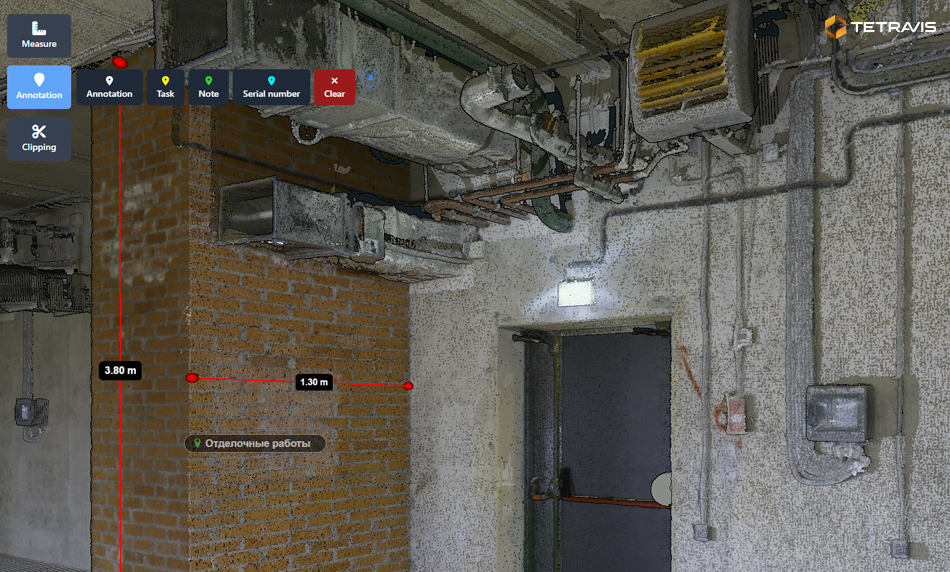
We value your thoughts on the concept of such operational DT solutions. We eagerly await your questions, criticism, and suggestions for pilot projects. It is always more exciting to develop new directions together!
